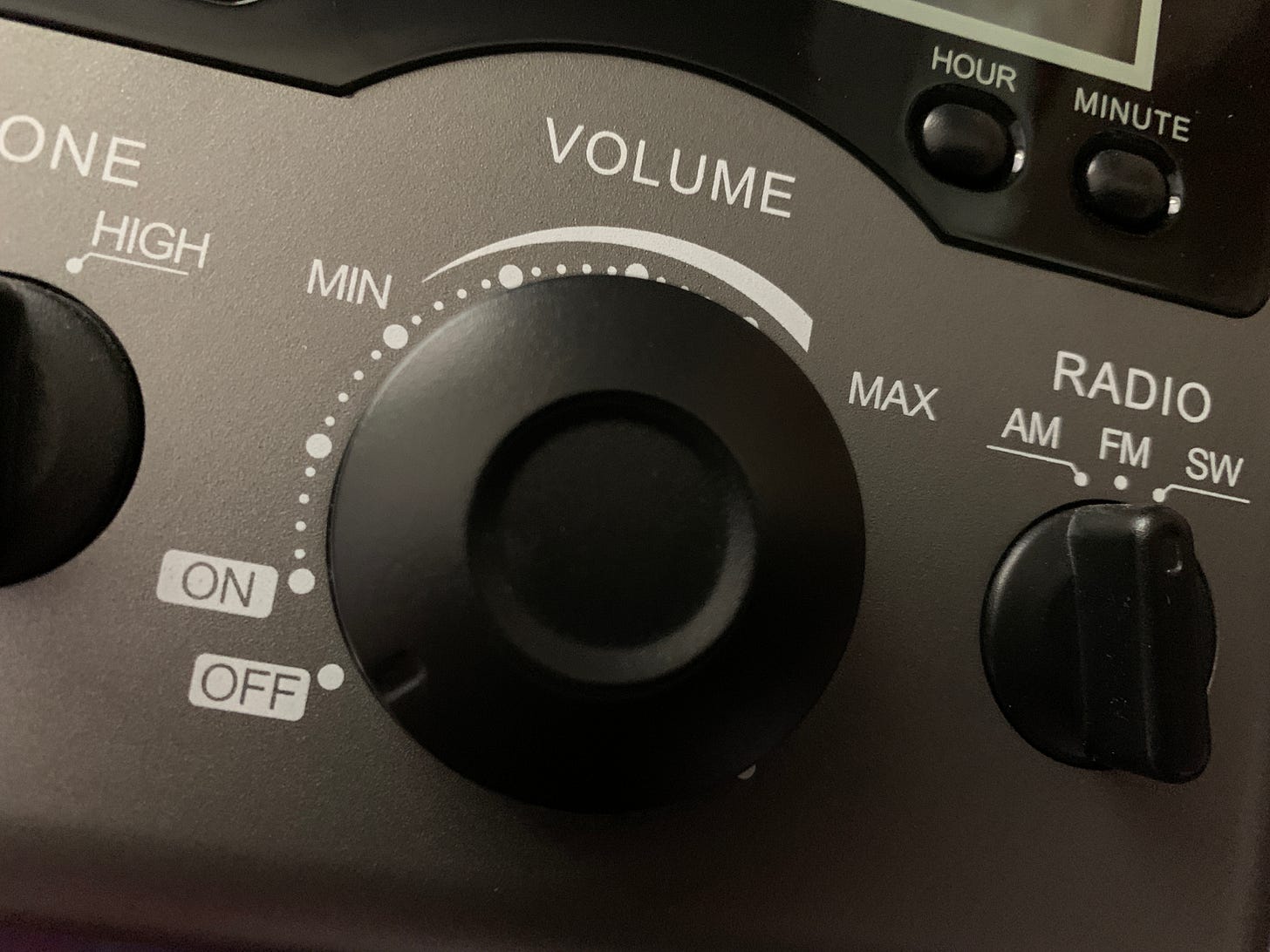For decades, AM radio has been slouching toward the ash heap of history, joining the hula hoop, Billy Beer, leisure suits, landline phones, and DeSoto automobiles.
Of course, Congress is discussing the matter.
The question on the table is whether to mandate that new automobiles sold in the United States have AM receivers. Many people say no, citing listener indifference and an overall increase of static-causing interference. That problem is particularly acute in electric cars. One segment of the opposition savors the idea of denying a platform to certain AM talk programs, which might be religious in nature or discuss right-wing politics approvingly.
Bills in the House and Senate would preserve AM in cars, with the law sunsetting after 10 years. Passage seems likely – if either bill makes the floor.
The advocates’ hook is national security. A report from the Senate Commerce Committee notes that a large majority of entry-point stations to the nation’s Emergency Alert System are on AM, making it “critical to domestic emergency management.”
Couldn’t FM stations handle that function?
Maybe, but AM has advantages in covering vast expanses such as the American West. FM signals are limited to line-of-sight, gradually negated by the curvature of the Earth. AM signals are much the same during daylight hours. But from sunset through sunrise, “skywaves” from AM bounce off the ionosphere as if by magic. In the case of 50,000-watt stations on relatively uncluttered frequencies, the result can be spectacular coverage and the potential of transmitting information to millions.
Skywaves are fickle.
Often a powerhouse station from New York or Chicago will come in better than a local. The next night that same station might not come in at all. Hobbyists known as DXers (shorthand for “distance”) have been around as long as AM radio itself, more than a century.
Even if AM stays in cars by government mandate, it would represent only a small victory. Every week brings stories of AM station owners turning in licenses or asking the Federal Communications Commission for special authority to go silent for a limited period, generally up to a year.
When an AM station perishes, finances are usually involved, directly or indirectly. Some sadder cases have involved thieves stealing copper from the transmitter site or senseless vandalism. Maybe a real estate developer covets that site and is willing to pay up. Or a storm knocks the tower down and it makes no sense to put it back up.
Occasionally a station owner passes away and the heirs consider the station a money pit, particularly when the electric bill arrives and there’s no income. Other owners save their heirs the trouble.
Nationally syndicated nighttime host Delilah made headlines in 2021 when she bought the AM station in her hometown, Reedsport, Ore., for $60,000. Less than four years later, she signed it off for a final time and informed the FCC: “I’m not able to continue operating the radio station and provide the financial means to do so.”
This lady didn’t buy the station on a lark; Delilah understands commitment. She is a mother of 15, including 11 adoptions, and broadcasts nightly to millions from her 55-acre farm in Washington state. As she continues to thrive — on FM, of course — the number of AM success stories dwindles.
In addition to impressive skywave coverage, WLW in Cincinnati and WSB in Atlanta remain at or near the top of their respective markets. WABC, the legendary Top 40 giant from New York, gets respectable ratings under the ownership of supermarket billionaire John Catsimatidis, who hosts conservative talk shows. Several all-news stations in major markets still are able to buck the high overhead costs of such formats. Foreign-language formats enjoy pockets of success.
Those are exceptions.
The norm has become what’s going on at corporate owners Townsquare and Cumulus, which are quietly wielding the ax on dozens of stations, including a smattering of FMs.
As one industry observer told the Radio World website: “Instead of a ‘reduction in workforce’, consider this a reduction in radio stations.”
Sources:
Inside Radio has the story on congressional efforts to save AM in cars: https://www.insideradio.com/free/senate-report-am-radio-in-cars-critical-for-emergencies-inexpensive-to-implement/article_d87fb8c4-6dbc-4dc4-a6da-49a4d253f977.html
Information Radio Specialists explains skywaves: https://theradiosource.com/articles/techtalk-skywave.htm
Radio World on the disappearance of stations: https://www.radioworld.com/news-and-business/headlines/groups-ponder-ris-reductions-in-stations
Radio Insight reports on Delilah’s sale of her AM station: https://radioinsight.com/headlines/300883/delilah-surrenders-kdun-license/
Tom Whitfield has written extensively about broadcasting and its history.





Awesome story, dude. Wasn’t aware of most of what you wrote. Thanks for the education.